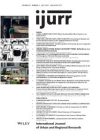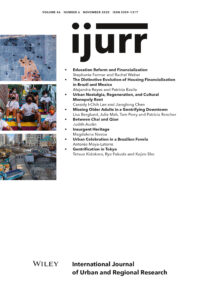Very little research has focused on how age factors into gentrification processes and how place branding helps drive gentrification. Scholarship on gentrification has engaged with the ways that race and class intersect to marginalize long-time residents politically and economically in the context of gentrification, but rarely analyzes the important role that age plays in exclusion, or how it is represented materially in the branding of changing neighborhoods. To address this gap, this article aims to present a better understanding of how age plays into representation in new developments through the branding of downtown Detroit as a young, hip place to live, work and play. The article outlines how older adults are excluded from the reimagining of the ‘new Detroit’ using a content analysis of media articles, social media, promotional materials and downtown redevelopment strategies. This analysis showed limited representation of older adults in new developments, activities and public spaces downtown. Instead, images focused on younger people, young families and young professionals enjoying downtown amenities, often highlighting their perceived economic contributions. Biased representations of changing neighborhoods create barriers to developing an age-friendly city. These findings inform the article’s recommendations directed at planners and developers on how older adults can be better accommodated and included in the development boom of downtown Detroit.
Details
Written by:
Lisa Berglund, Julie Mah, Tam Perry & Patricia Rencher
Digital Object Identifier (DOI)
10.1111/1468-2427.13139
About DOI

